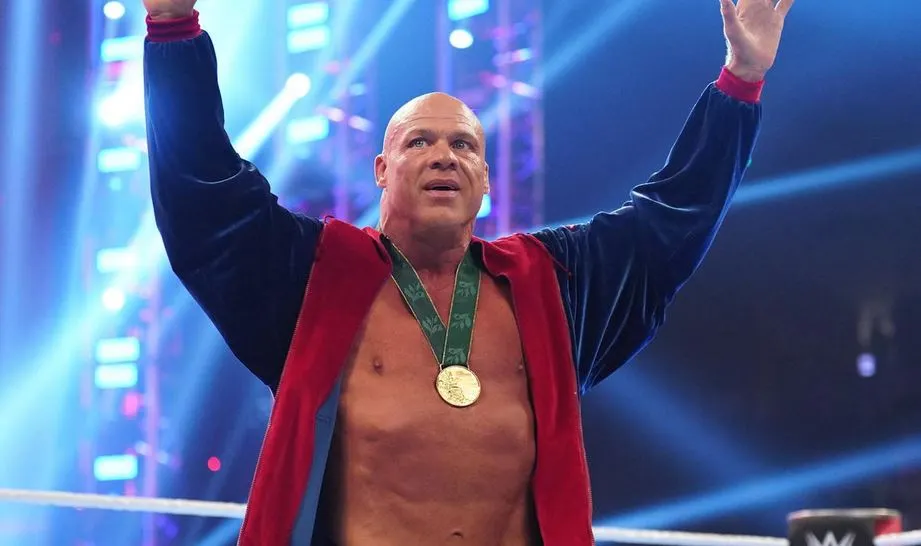The Influence of Reality TV on WWE: Total Divas and Beyond
Reality television is a dominating modern-day entertainment genre, whether it be from its first inception. The real drama, authentic experiences, and personalistic narration of the events have caught the eyes and ears of audiences worldwide. One of the most intriguing crossroads of reality TV and classic entertainment is professional wrestling, most notably World Wrestling Entertainment, also known as WWE. WWE, being an athletic-theatrical hybrid, introduced itself into reality TV through such shows as “Total Divas,” which affects a lot about its brand, the engagement of its fans, and the perception. This paper delves into how reality TV has impacted WWE, specifically through the case study of “Total Divas” on broad implications in the wrestling industry.
The Rise of Reality TV
It became a separate genre from the end of the 20th century, and shows like “The Real World” (1992) and “Survivor” (2000) lowered the boom on the watching public. Such programs bring a viewer into the world of either an ordinary person or a celebrity, omitting the affecting storyline but possessing provocation to authenticity and understanding the people who inhabit the screen. With time, the genre became so popular that it brought to life many subgenres—the shows of competition, dating series, and the shows of celebrity lifestyle.
People are still interested in reality television because it presents the human experience in a very raw and unfiltered light. It contains the drama leading to an emotional rollercoaster and making the connection with real human beings having real problems. This format proved to be a capitalistic bonanza for the networks, as many reality shows have been able to command top ratings and fetch massive advertising revenue.
WWE and the World of Sports Entertainment
For several decades now, World Wrestling Entertainment has been leading the way in sports entertainment—an entire blend of muted wrestling dictated by a Moderator combined with dramatic storytelling. WWE was founded by Vince McMahon in 1945. Since then, WWE has taken the notion of wrestling to greater heights, with its larger-than-life characters, complex and constantly evolving storylines that keep fans buzzing around the water cooler. Just company reports alone indicating upwards of 300 live events per year. WWE’s programming, including the phenomenon known as “Monday Night Raw,” the great spectacle called “SmackDown,” and.
What does set WWE apart is the storytelling; it is those storylines that draw fans to the characters WWE creates. The performance thus is one trimming of athletes or, to be more specific, superstars in their given roles as both competing athletes and entertainers in scripted feuds, alliances, and personal dramas. This blending of sport and entertainment has allowed WWE to continue with a diehard base and even more mainstream recognition.
The creation of “Total Divas”
In 2013, the company made its way into reality television with “Total Divas” in collaboration with the E! Network. This was a behind-the-scenes story of WWE’s female performers at that time, who had the stage name of Divas. “Total Divas” afforded viewers, for the first time, a fantastic laid-out exposure to the private and professional lives of these women, their struggles, triumphs, and relationships personally and with one another in and out of the squared circle.
Featuring a premise as simple as it was potentially effective—following around a bevy of WWE Divas as they juggle the rigorous life of a professional wrestler—Total Divas featured an ensemble cast primarily made up of big-time WWE stars like Nikki and Brie Bella (The Bella Twins), Natalya, and Naomi, plus relative newbies Eva Marie and JoJo. “Total Divas” promised to peel back the curtain, revealing the real personalities behind the on-screen characters, thus allowing for a more prosperous synergistic link between the on-screen characters and the audience.
Impact on WWE’s Women Superstars
In fact, “Total Divas” played a tremendously huge role in the perception and popularity of the WWE’s female Superstars. Before the program, WWE women’s wrestling took a back seat to the men’s division, both in terms of airtime and storylines, which mainly focused on physical attractiveness rather than wrestling ability. It was “Total Divas” that shifted that narrative by showcasing the talent and dedication, along with the personal files of WWE’s female performers.
The show allowed Divas to express themselves, and the fans were given a closer personal connection with various Divas. Nikki and Brie Bella were spider-pushed because of “Total Divas,” which is now allowing them to sell more merchandise toward the kids and teens demographic, as well as open opportunities to be spotted in various tabloids and magazines. If it could be said that the Bella Twins had transcended wrestling in the WWE, there wouldn’t be a lot of lies told because of how obsequious they have become and how influential they are within pop culture, where they affect and inspire the youth.
“Total Divas” also featured how hard the wrestling business could be, both on one’s body and emotionally—an act of sacrifice the performers did for the fans. It showcased the structured rigors of training combined with the injuries and personal sacrifices the Divas had to make, humanizing their athletes. The perspective from backstage took the performers out of their gimmicks in some sense and aligned them back with their humanity.
The Women’s Evolution
Total Divas was part of the whole Woman’s Evolution in WWE. This push was towards fair opportunities and recognition in women’s wrestling, equivalent to that of their male counterparts. The success of the Total Divas show proved that there was, in actuality, such a vast audience interested in women’s wrestling and personal stories, thus greenlighting WWE to put more resources towards their talents.
Women’s Evolution milestone included the rebranding of the Divas Division to the Women’s Division, introduction of new Championship Titles, main eventing pay-per-views by the female Superstars. These four horsewomen not only broke onto the top tier of the WWE Universe but also set its pace with delivering high expectations on their performances in the ring with quality and captivating storyline matches that men deliver in their division.
The re-introduction and establishment of a revolution for the industry. It has been “Total Divas,” period. The show where the women got visibility with precision as Superstars. Their ability to reflect athleticism, determination, and charisma showed that women’s wrestling could have a substantial viewership and burst fans’ engagement. WWE females obtained the respect and credit of being a realization towards making a more inclusive and diverse wrestling milieu.
Expanding WWE Universe
Reality programming brought tremendous real life into WWE beyond “Total Divas.” The latter’s show went well, leading to a growth of more reality programming that significantly expanded the WWE Universe: “Total Bellas”—was a spinoff further elaborating on the lives of Nikki and Brie Bella—”Miz & Mrs.,”—The Miz and Maryse. Fans went beyond that spectacle and looked more into their favorite Superstars’ life realities.
These reality shows not only deepen the connection of the performers to their fans but also attracted new audiences. People who may not be traditional wrestling fans found venues into the shows through personal and relatable drama presented in a typical reality TV format. This helps WWE create a larger demographic, allowing the brand to become more visible and more marketable.
The Business of Reality TV and WWE Business
Business-wise, doing reality TV formatting has proven WWE nothing less of a bullish strategy shiny in some realities. The reality show “Total Divas” and its spin-offs have amassed good revenues from advertisements, sponsorships, and distribution deals. Other series carried on the E! Network, which specializes in reality-based entertainment, grabbed the considerable Outreach and viewership ratings for a company to venture into the reality world.
What is more, it has been generating money for WWE in more ways than one. With a more extensive, vested interest in the women and visibility, merchandise was selling more, tickets for any WWE event were selling more, and so were subscriptions to the WWE Network (now Peacock). Reality TV further elevated the career paths of journeymen-turned-celebrities to include branding partnerships and endorsements as WWE Superstars were being pushed as a brand in their own right to general audiences.
Criticisms and Controversy
Not without its share of criticism and controversy, WWE has had a growing involvement in reality TV. Critics always claimed that reality shows called “Total Divas” and “Total Bellas” have blurred the line between where the scripted entertainment ends and the real-life drama begins, leaving the entire fan base almost in a dilemma of what is real and what is fake. At times, personal relationships and off-screen drama have shrouded in-ring action, which remains the mainstay of appeal for WWE fans.
Furthermore, themes and characterizations alike in reality TV have driven the public to question their reality and exploitativeness as well. Critics have long objected to the release of personal difficulties or limitations being possibly used by the channel to urge dramatic or false situations that may damage the privacy or health of the performers. The discussion of personal situations and conflicts for public amusement has also been challenged for ethical reasons.
WWE and Reality TV Future
Considering all this, reality TV should form a critical part of the relationship between WWE and professional wrestling with respect to their further development. Although what has been managed with such productions as “Total Divas” has met the goal of showing potential ways in which reality can be included to make WWE’s brand more memorable, draw more attention from fans, and simply remain profitable through revenues, how to find the pure balancing act between what reality TV needs and the sanctity attached to professional wrestling will be an essential business equation. New formats and storylines set in the WWE Universe can see plenty of light through future, reality-based projects, drawing perspectives of documentaries, talent search, or life behind the scenes. Audiences from a wide range of preferences will find it relatable. Hence, WWE is looking forward to innovating as the key to further success in the reel genre.
Conclusion
The influence of reality TV on WWE, represented by television series such as “Total Divas,” was vast and multifaceted in many ways. “Total Divas” increased the prestige of the female talent in WWE, which was more about women than wrestling. Reality TV reached broader audiences and new revenue streams, anchoring WWE solidly in the mainstream media/TV Entertainment circuit. WWE’s brand and storytelling are likely to carry on, joined with reality TV and professional wrestling, into the near future. The problematic yet intrinsic promises regarding the genre require that sufficient care be taken in navigating a path while retaining the very essence of WWE’s athletic and theatrical appeal. Indeed, the relationship built between the realism of TV and the athletic and ceremonious code of WWE reflects on the demeanor of modern entertainment, ever-changing yet holding lifetime affinities with real-time drama and verbose spectacle, alluring audiences worldwide.



















